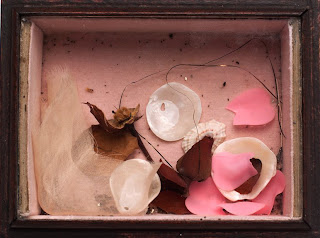Having previously made a design that had a socio-political agenda, I wanted to turn in a completely different direction and create a project that falls on the commercial side. This idea was sparked by seeing the works of Alexey Brodovitch and the way he showcased high fashion in the 1940’s to mid 50’s. I’ve always been impressed with the level of sophistication and style women had during that period and I therefore wanted to create a magazine layout that would reflect the era and its fashion.
When looking at formal characteristics in
Brodovitch’s work, I noticed that they are often black and white, the models
were extremely elegant, sophisticated and chic. Also, the juxtaposition of image and
type in his designs was very unique and kept a minimalist style. Additionally, the large type and blur in my design were partly inspired by his layouts (under).
Bits and pieces of these
formal aspects brought to my mind the main inspiration behind my design: Coco Chanel.
An iconic fashion designer, Chanel
revolutionized women’s fashion in the post WWI era. She liberated women from
tight corsets and typically feminine, vibrant and over-the-top clothing and
replaced them with a simplistic, black and white, sophisticated, streamlined and somewhat
masculine styles.
Although
the Chanel brand has been modernized and is nowadays still on top of the
fashion scene, having Brodovitch as my initial inspiration, I wanted to create
an homage to the traditional Coco Chanel. This idea is shown through the use of an
interview (taken from a televised interview and translated onto text in
English). The decision to incorporate this interview in particular was due to
the fact that it made her personality shine through the best. She was known to
be very composed, straightforward, blunt, confident, and stern, which shows in
that interview. Also, I wanted the imagery to reflect on Chanel’s essence and I
therefore made the design black and white, the model is wearing black and her
pose is creating an allusion to Chanel by ambiguously mimicking one of her famous
portraits (above). To have the effect of an allusion rather than literal depiction, the model is out of focus on the right photo and her face is cut off
on the left one.
Choosing not to incorporate Chanel’s
portraits and using my own photographs made my layout more personalized, which is a quality I wish to have in my projects. Also, the writing of “Coco”
throughout the layout was of my own making (Illustrator) and I decided to place it there to
frame the interview as well as to create a poetic link between the two images for
continuity. Moreover, to recreate an actual magazine article, small details
such as the heading of “Fashion” was added, the titles to each image were
subtly indicated in the corners, the issue and the name of the magazine was incorporated as well as adding page numbers.
My article:
“Nothing is more aging than trying to look younger, it’s the stupidest thing a woman can do.”
Coco Chanel: I saw that three days ago in the street. A man
slapping a woman. She deserved it. I’d been watching them for a while, thinking
that if she didn’t shut up, he’d slap her. And he did.
- Do people recognize you in the
street and talk to you?
Coco Chanel: Yes. Often, too often to my taste, I find it
tiring. People that come and say hello to me; no I don’t know them, I’m sure
I’ve never seen them, but you have to pretend to be polite, shake their hand…
People I’m with ask me who they are… I don’t know. What do you mean you don’t
know? No I don’t know. They seem to know you really well. If it pleases them,
so be it, but I’m sure I don’t know them.
- How do you manage to be both
varied and true to yourself in your creative process?
CC: If
you move away from style, you have to start over and over again, it’s
impossible. Unfortunately, this is what is happening at the moment. Some
couturiers are really good couturiers but they change every week, and this is
the reason why I’ve created my own style. I couldn’t do it if I had to come up
with something new every week, you’d end up creating very ugly things.
CC: I’ve been fighting all
couturiers for the past two years on those shorts dresses. I find them
indecent. To show one’s knees, they need to be perfect, they are an
articulation. Do you know what’s been happening to me? When I walk into
restaurants men look at me and applaud me because I’ve spoken against showing
one’s knees, that it was awful, pointless and hardly ever pretty and that if
they had any idea of what the body is like, they’d know if you have bad knees
you also have bad hips, too large.
I’ve
got nothing against knees if they’re pretty. And I believe that if you show
everything off, you don’t want anything anymore. It’s like people presented
with their favorite dish after being force-fed food. They’d say no on that day.
It’s a bit like that.
CC: I’ve got a really, really beautiful
clientèle. This is the only thing I’m truly proud of. I’m convinced
there isn’t a house in France
with a clientèle like mine. From all around the world you understand,
the best from all around the world and I don’t blush when saying so, it’s bold
to say, but it’s the truth. You can check it, I believe anyone who dresses well
in the world dresses here.































